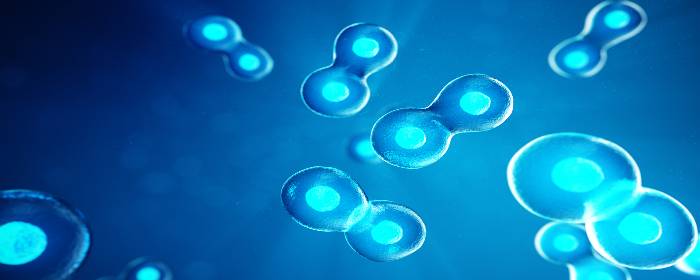
by admin | Apr 30, 2019 | Hyperbaric Oxygen Therapy, Stem Cell Research, Stem Cell Therapy, Traumatic Brain Injury
Traumatic brain injury (TBI) encompasses a wide range of injuries, neurological problems, and outcomes. On one end of the spectrum is a concussion, which can be mild and short lasting. At the other end of the spectrum, traumatic brain injury can be lethal or leave patients with chronic mental and physical problems. Despite this range of severities, traumatic brain injury is one of the leading causes of disability in the United States, affecting over 13 million people. People who suffer from chronic symptoms related to traumatic brain injury may struggle with chronic seizures, memory problems, concentration problems, agitation, among others. TBI can have profoundly worsened a person’s quality of life and overall well-being.
Unfortunately, little can be done to treat traumatic brain injury directly. Aside from treating symptoms, the main treatment for TBI is to have the patient to rest and avoid stimulation in an effort to give the brain time to heal. Patients can regain some function through intensive work with physical, occupational, speech, and recreational therapist. However, the brain’s ability to heal itself is limited compared to other tissues of the body. In short, the brain has very little capacity to make new brain cells after we are born. So once TBI has occurred, patients either need to depend on other healthy areas of the brain or simply adapt to their circumstances.
Fortunately, researchers are finding ways to improve on nature through hyperbaric oxygen therapy. Drs. Shandley, Wolf and other hyperbaric medicine researchers recruited a group of 28 military veterans who sustained a traumatic brain injury in Iraq or Afghanistan. These individuals had ongoing cognitive problems as a result of their brain injuries. Researchers placed some study participants in 2.4 atm avoid hundred percent oxygen, while the others simply underwent a placebo experience at basically normal pressure and oxygen levels. The two groups underwent 30 exposures each and took a cognitive test before and after these treatments.
Hyperbaric oxygen therapy increased the number of stem cells in the blood of patients with TBI. In other words, hyperbaric oxygen treatment was able to move stem cells from the bone marrow and perhaps other tissues into the bloodstream. At the same time, those treated with hyperbaric oxygen performed better on tests of cognition including ImPACT, BrainCheckers, and PCL-M test. Moreover, no adverse effects of treatment were observed. Taken together, these results suggest 30 sessions of hyperbaric oxygen treatment at 2.4 atm was able to increase stem cells in the blood and improve cognition in US warfighters who suffered traumatic brain injury during combat. These results are encouraging news for the millions of veterans and nonveterans who sustained a traumatic brain injury every year.
Reference: Shandley, S. et al. (2017). Increased circulating stem cells and better cognitive performance in traumatic brain injury subjects following hyperbaric oxygen therapy. Undersea & Hyperbaric Medical Society. 2017 May-Jun;44(3):257-269.

by admin | Apr 15, 2019 | Stem Cell Research, Alzheimer’s Disease, Stem Cell Therapy
Alzheimer’s disease is the most common form of dementia, and though its prevalence is growing, there are currently no medical interventions that are able to reverse or slow the disease. Most current therapies address the symptoms of Alzheimer’s disease rather than the underlying cause of the disease.
Stem cells appear to offer a promising opportunity for treating Alzheimer’s disease and other neurodegenerative disorders, and a recent review published in Current Alzheimer Research has covered research into the ways stem cells can be applied to these disorders. Specifically, the authors of the review discuss the stem cell sources that may offer the potential to treat neurodegenerative diseases and the mechanisms by which these stem cells may confer benefits to this set of patients.
According to data collected so far, stem cells may be both safe and effective in treating neurodegenerative disorders like Alzheimer’s disease, but the mechanism by which they produce benefits for those with these disorders is not entirely clear. There are some data that show that the replacement of degenerated tissue with new proliferative stem cells accounts for stem cell benefits in models of neurodegenerative disorders, while other data show that stem cells can lead to advantageous enhancements in the expression of synaptic proteins.
Evidence from other studies, however, suggest that stem cells help with neurodegenerative disease through the release of neurotrophic factors that lead to paracrine benefits. Additional studies point to modulation of the immune system as the way that stem cells may help those with neurodegenerative disorders.
Future research will help to elucidate the specific mechanisms by which stem cells can provide effective therapy for people with neurodegenerative disorders. It may be the case that a variety of stem cell types used in multiple ways can be helpful for neurodegenerative disease therapy, and research will help to delineate the different ways stem cells can be used and inform the therapies that are developed.
Reference: Bali, P, et al. (2017). Potential for stem cells therapy in Alzheimer’s disease: Do neurotrophic factors play a critical role? Current Alzheimer Research, 14(2), 208-220.

by admin | Apr 5, 2019 | Health Awareness
At some point or another, you’ve probably heard about the importance of getting enough vitamin D. This nutrient helps us stay healthy at every age, supporting the body’s ability to absorb calcium and block parathyroid hormone release to support strong bones. Yet, outside of promoting bone strength, vitamin D could also help us combat potentially serious illnesses. Below are five health issues which have been linked to low vitamin D levels.
1 Schizophrenia
Unlike many of the other conditions on this list, schizophrenia is a condition which typically appears at a younger age. Symptoms such as social withdrawal, difficulty focusing, and hallucinations commonly develop between the ages of 16 and 30. Research shows people who are vitamin D deficient are twice as likely to be diagnosed, and specifically, individuals living in high latitudes and colder climates are at a higher risk for developing schizophrenia.
2 Dementia
The risk for some forms of dementia, the condition in which cognitive function, behavior, and memory are compromised, is as much as two times higher in older adults with vitamin D deficiencies. Research shows that the greater the deficiency is, the higher the risk. While a direct cause-and-effect relationship has yet to be established, having vitamin D levels checked may still be a practice worth considering, especially in groups with a family history of Alzheimer’s or other forms of dementia.
3 Heart Disease
Low vitamin D blood levels have been linked to cardiovascular complications, including heart disease. Vitamin D is involved in cardiovascular function, and vitamin D receptors have been found in all cardiovascular cells and are even located in arterial walls. It’s suspected that insufficient levels of the nutrient are correlated with atherosclerosis, a build-up of fat in the artery walls which is a telltale characteristic of heart disease.
4 Erectile Dysfunction
Men with severe erectile dysfunction (ED) appear to have lower vitamin D levels than those with mild ED. While these findings were gathered through a small study, researchers theorize that the relationship between vitamin D and artery health (described in the point above) could be behind the trend. To produce and maintain an erection, there must be ample blood flow and properly functioning arteries.
5 Prostate Cancer
In a study published in 2014, researchers observed lower vitamin D levels in men who tested positive for prostate cancer, compared to their cancer-free peers. The trend was especially prevalent among African-American men. While the research didn’t suggest how vitamin D levels could lead to prostate cancer, the nutrient has been a suspected disease-fighting agent for quite some time and is said to also help reduce the risk of conditions such as multiple sclerosis and the flu virus.
While there’s still much to learn about vitamin D’s ability to defend against disease and promote better overall mental and physical health, these findings make a compelling case in the nutrient’s favor. Because the body can’t produce its own vitamin D without sunlight exposure or dietary factors, it’s important to make sure you’re taking in ample levels every day. Populations across the globe are suffering from low vitamin D, which could be attributed to dietary factors and increasing sun safety awareness. If you’re concerned about your levels, consider discussing supplementation options with your medical team.

by admin | Apr 3, 2019 | Pain Management, Stem Cell Research
Chronic low back pain is a common condition that can significantly reduce the quality of life. The degeneration of the intervertebral disc is one cause for low back pain, and there is no therapeutic intervention that effectively reverses this type of degeneration. Both non-surgical and surgical treatments that are currently used for chronic low back pain aim to help the symptoms associated with the condition but do not address the underlying cause. Recently, however, researchers have begun to explore the ways in which stem cells may be used to help regenerate the intervertebral disc to restore functioning and eliminate low back pain over the long-term. A review of the relevant literature was recently published in Translational Pediatrics.
The intervertebral disc does not have a large potential to regenerate itself, so it is a challenge to find the best cell sources to facilitate such regeneration. Adult mesenchymal stem cells, which are found most often in bone marrow and also in fat, or adipose, tissue are attractive candidates for this type of regeneration given their high capacity to proliferate and to differentiate into different types of cells. In addition, they can self-renew, are highly accessible, and unlike some other types of stem cells, there are no ethical issues associated with their retrieval.
Given the success of mesenchymal stem cell transplantation in preclinical studies of intervertebral disc degeneration, the use of these cells has progressed to clinical trials. Autologous bone marrow mesenchymal stem cells – meaning stem cells taken from the bone marrow of the patients themselves – have been reported in the treatment of disc degeneration in patients with leg and back pain. Reduced pain has been observed at one and two years after transplantation. Importantly, the clinical trials investigating the use of stem cells in intervertebral disc regeneration have provided evidence that the relevant procedures are not only effective but also clinically safe. Future research will help to clarify if and how these and other types of stem cells may be used to reverse intervertebral disc regeneration and the associated chronic low back pain.
Reference: Wei, A. et al. (2014). Mesenchymal stem cells: potential application in intervertebral disc regeneration. Translational Pediatrics, 3(2), 71-90.
by admin | Mar 29, 2019
WHAT IS Regenerative Medicine for Age Management Discover the potential to stop the hands of time with this natural alternative option for age management. Request Information Packet WHAT IS Regenerative Medicine for Age Management Discover the potential to stop the...





 St. Petersburg, Florida
St. Petersburg, Florida
